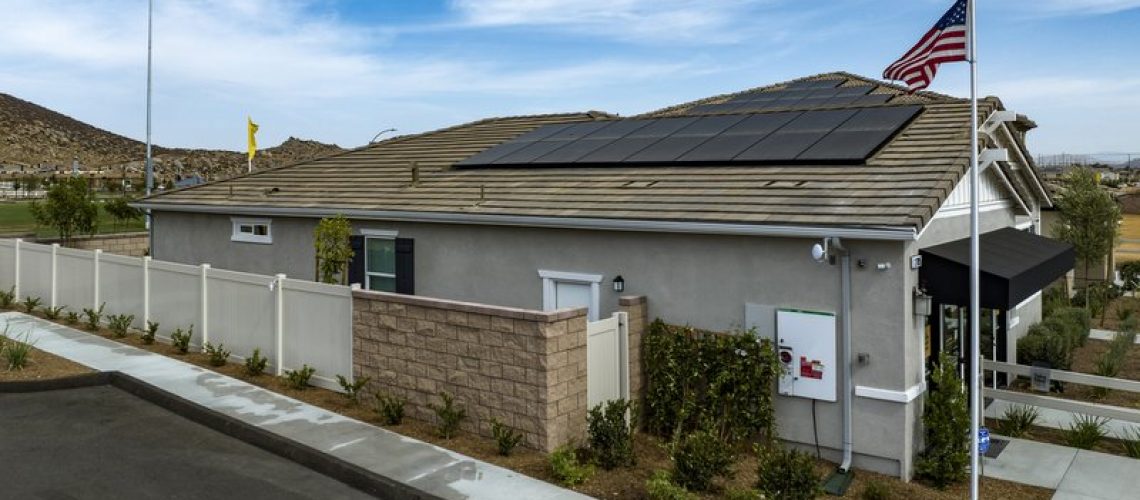The all-electric home revolution is going to take collaboration among big-time partners. One such collaboration was announced this week, involving one of the largest homebuilders in the country, one of the largest solar installers and a renowned electrical provider along with a California utility and university.
KB Home, SunPower and the University of California, Irvine (UCI) initially joined forces to reimagine what a new home community could look like. Next came a $6.65 million Department of Energy (DOE) grant, microgrid design and engineering support from Schneider Electric, and collaboration with Southern California Edison (SCE) to ensure a smooth transition between grid and off-grid electricity.
The end result is KB Home’s newly launched Energy-Smart Connected Communities in Menifee, Calif. This community will include 219 all-electric homes, powered by solar + storage, that are all connected in a microgrid with a shared community battery. Every home will maintain its regular service with local utility Southern California Edison but is designed to operate during an outage as part of a self-supporting microgrid.
All involved hope to offer this as a blueprint for the home development of the future.
“With this project we are taking a large leap toward creating communities from the ground up that are designed to produce sustainable and affordable energy and resiliency to the impacts of climate change on our grid,” said Matt Brost, Vice President of Sales, New Homes, at SunPower.
• All 219 of the homes in the new Durango and Oak Shade communities will be built to meet the Department of Energy’s Zero Energy Ready Home criteria, which include ENERGY STAR, WaterSense, and Indoor airPLUS. These additional features will help homeowners reduce average energy use by up to 40%.
• Each home comes with a SunPower Equinox solar system, a 13 kWh SunVault Storage battery, high efficiency appliances, flexible loads such as electric heat pump water heaters and HVAC systems and other smart technologies like Schneider Electric’s Square D Energy Center and Connected Wiring Devices.
• All homes will be pre-wired to be smart Electric vehicle (EV) charger ready, and some will demonstrate bidirectional charging, which enables an EV to be an additional source of energy for the home during a power outage. EV chargers will be available for purchase at the time of sale.
•Together, they are designed to support critical loads such as lights, refrigeration and WiFi, as well as additional high-capacity loads like HVAC and domestic hot water. When the sun is shining, individual and community batteries can be continually recharged using excess solar generation until the grid connection returns.
What’s next?
Additional energy services offered by SunPower allow residents to enroll in a Virtual Power Plant (VPP) program through which their battery storage, EV chargers and other flexible loads will automatically dispatch to support the electric grid. Enrolled homeowners will be eligible for compensation for their participation in the program. UCI will also simulate the connected microgrids, analyze data from the VPP program, and collaborate with SCE to determine its effectiveness in supporting grid infrastructure.
The Advanced Power and Energy Program (APEP) at the University of California, Irvine will acquire and archive data from microgrid events and conduct research to enhance the technologies deployed in similar applications in the future. It will ensure that the microgrid controller meets the national standards that evolved from prior research conducted by APEP for the DOE using the UCI Microgrid as a platform for both the development and demonstration.
“This is at the cutting edge of the next generation of home developments,” said Scott Samuelsen, Professor of Mechanical, Aerospace, and Environmental Engineering at UCI and the Co-Principal Investigator with SunPower. “For homeowners, the digital and connected future and home charging and discharging of electric vehicles will benefit from the enhanced home energy security provided by microgrid technology.”



